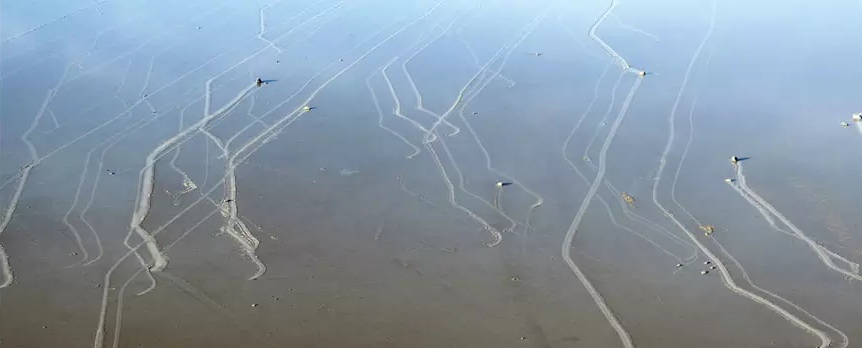Littered across the surface of a dry lake in Death Valley are hundreds of rocks – some weighing as much as 700 pounds (320kg) – that have eerily moved across the ground, leaving trails that can stretch for hundreds of meters.
The mystery has stumped scientists since the 1940s because the stones can sit for a decade without moving. No one has seen them actually in motion – until now.
In a paper published in the journal PLOS ONE on Aug. 27, a team led by Scripps Institution of Oceanography, UC San Diego, paleobiologist Richard Norris reports on first-hand observations of the phenomenon.
But in December 2013, Norris and co-author and cousin Jim Norris arrived in Death Valley to discover that the lake bed (also called a ‘playa’) was covered with a pond of water seven centimeters (three inches) deep. Shortly after, the rocks began moving.
“Science sometimes has an element of luck,” Richard Norris said. “We expected to wait five or ten years without anything moving, but only two years into the project, we just happened to be there at the right time to see it happen in person.”

Their observations show that moving the rocks requires a rare combination of events. First, the surface fills with water, which must be deep enough to form floating ice during cold winter nights but shallow enough to expose the rocks. As nighttime temperatures plummet, the pond freezes to form thin sheets of “windowpane” ice, which must be thin enough to move freely but thick enough to maintain strength. On sunny days, the ice begins to melt and break up into large floating panels, which light winds drive across the playa, pushing rocks in front of them and leaving trails in the soft mud below the surface.
“On Dec. 21, 2013, ice breakup happened just around noon, with popping and cracking sounds coming from all over the frozen pond surface,” said Richard Norris. “I said to Jim, ‘This is it!’”
It turned out the rocks moved under light winds and ice less than 3-5 millimeters (0.25 inches) thick. The rocks moved only a few inches per second (2-6 meters per minute), a speed that is almost imperceptible at a distance and without stationary reference points. That means that tourists might have actually seen this happening without realizing it.
“It is really tough to gauge that a rock is in motion if all the rocks around it are also moving,” said Norris
(WATCH the video below, or READ more at Scripps Institution of Oceanography)
Photo: Scripps Institution of Oceanography




















